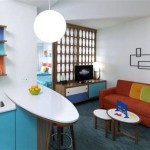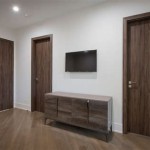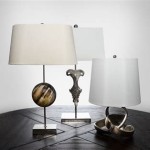Cessna 172 Interiors: A Look Inside the Iconic Aircraft
The Cessna 172 Skyhawk, a ubiquitous sight in the skies across the globe, is renowned for its dependable performance and ease of operation. But beyond its exterior, lies an interior designed with functionality and comfort in mind for both pilots and passengers. The Cessna 172's interior is a testament to the aircraft's versatility, accommodating a wide range of uses from flight training to personal travel.
Cockpit Layout and Instrumentation
The Cessna 172 cockpit is designed with a simple and intuitive layout that prioritizes clear visibility and easy access to controls. The pilot's instruments are grouped around a central panel, with the primary flight instruments (airspeed indicator, altitude indicator, heading indicator, and vertical speed indicator) arranged in a "six pack" configuration for optimal reading. The yoke and throttle are positioned ergonomically, allowing for comfortable control of the aircraft. The co-pilot's panel features a smaller set of instruments, providing essential information for the non-flying pilot or passengers.
The Cessna 172 is known for its straightforward instrumentation, making it a popular choice for flight training. The instruments are readily understandable and operate in a predictable manner, enabling students to focus on the fundamentals of flying rather than complex systems. This simplicity extends to the aircraft's avionics suite, which can be customized based on the operator's needs, from basic radio communication to advanced GPS navigation systems.
Passenger Cabin Comfort and Features
The Cessna 172's cabin is designed to accommodate up to four occupants, including the pilot. The seats are comfortable and provide sufficient legroom for most passengers. The spacious cabin offers ample headroom and a pleasant environment for short-haul flights. While simplicity is a hallmark of the Cessna 172, the cabin is equipped with essential features including ventilation and basic storage compartments. The doors open wide, facilitating easy entry and exit for passengers.
While the Cessna 172 is primarily known for its utilitarian design, several customization options are available for enhancing passenger comfort. Manufacturers offer upgraded upholstery, soundproofing, and entertainment systems to create a more luxurious and enjoyable flying experience. Some operators opt for interior modifications that cater to specific needs, such as installing medical equipment for air ambulance operations or adding extra luggage space for freight transportation.
Evolution of Interior Design
Throughout its long production history, the Cessna 172 has undergone several interior design updates to improve functionality and comfort. Early models featured basic instrumentation and minimalist cabin amenities. Over time, the cockpit has been modernized with the inclusion of digital displays, advanced navigation systems, and more user-friendly controls. Similarly, the passenger cabin has benefited from improvements like improved seating, enhanced soundproofing, and the addition of features such as USB charging ports.
The evolution of the Cessna 172's interior reflects the changing needs and expectations of pilots and passengers. The aircraft's enduring popularity is a testament to its ability to adapt to the evolving aviation landscape, offering a balance between functionality, reliability, and comfort.

Cessna 172s Interior Luis Cavaco Cruz Photo Scientific Diagram

Cessna 172 Skyhawk Interior

Cessna Flyer Association Future Re Imagining The 172 S Interior Space

Cessna 172s Skyhawk Astonfly

Cessna 172 Interior Vliegtuig

Diy Interiors Owners Guide To What Expect Cessna Owner Organization

Cessna 172 Aerodyne Aviation

Cessna 172 Interior Gallery After 2 Jpg

Textron Shows Off Refreshed Interiors For Piston Class Of Aircraft

Cessna 172 Or 182 Complete Leather Interior








